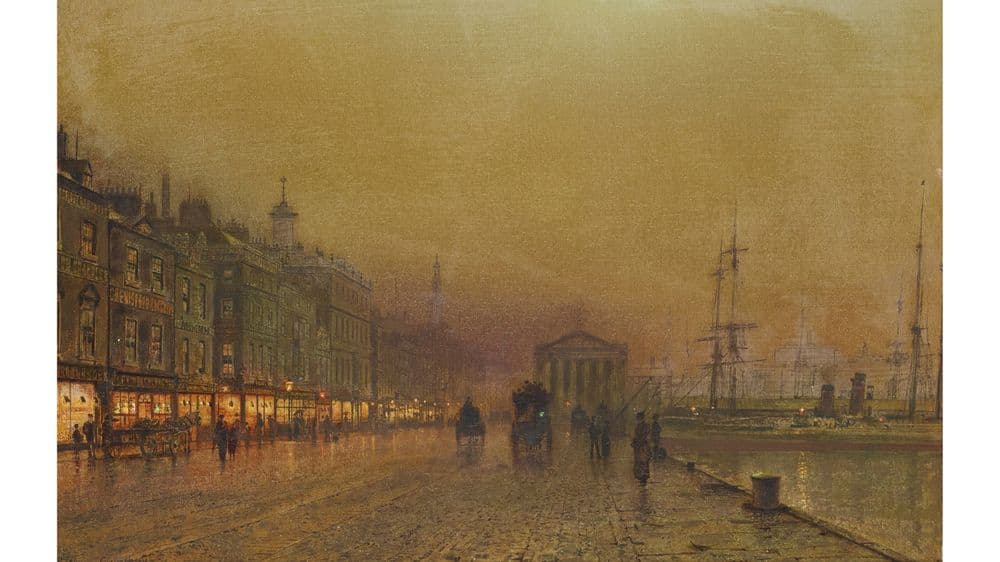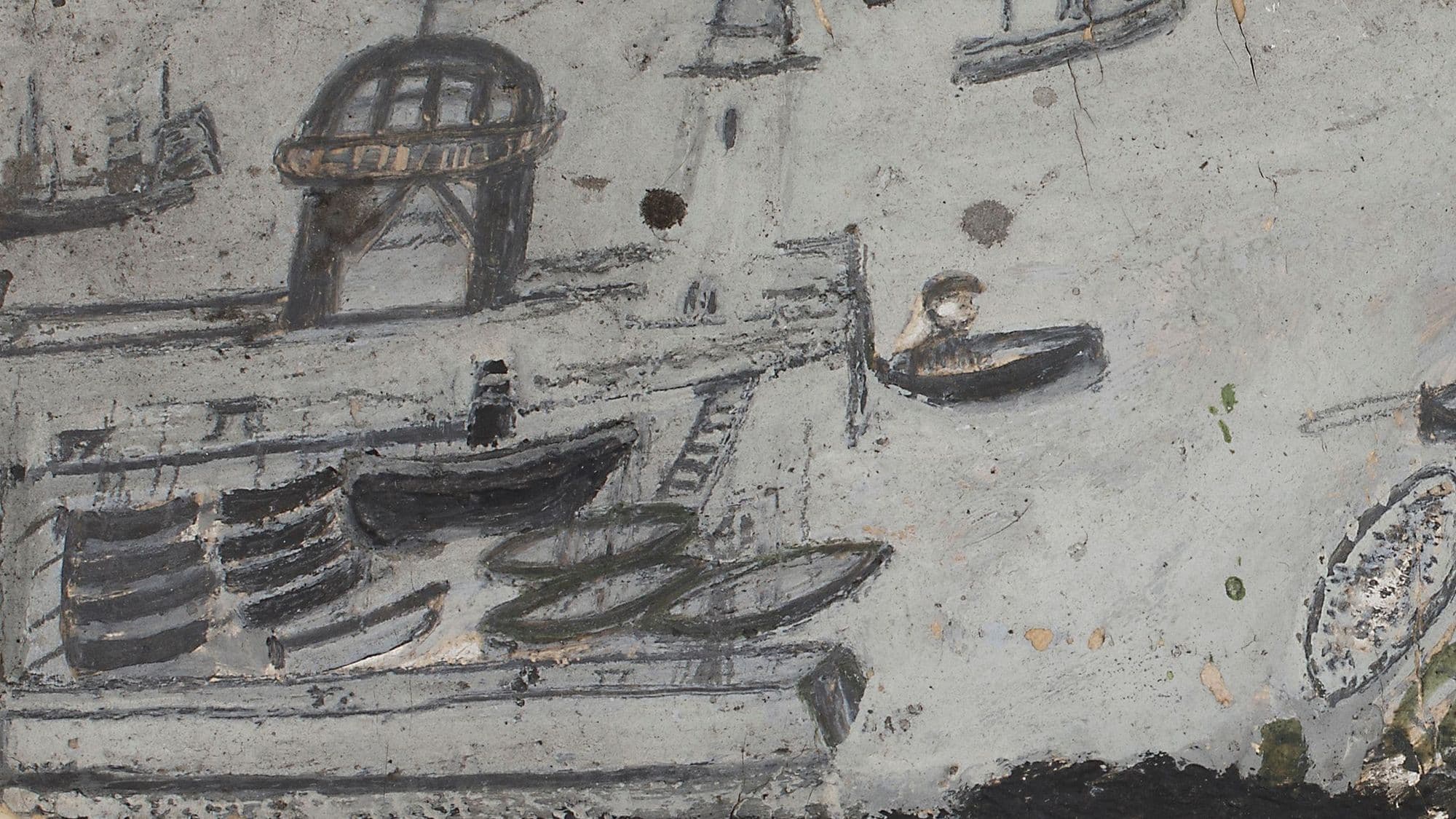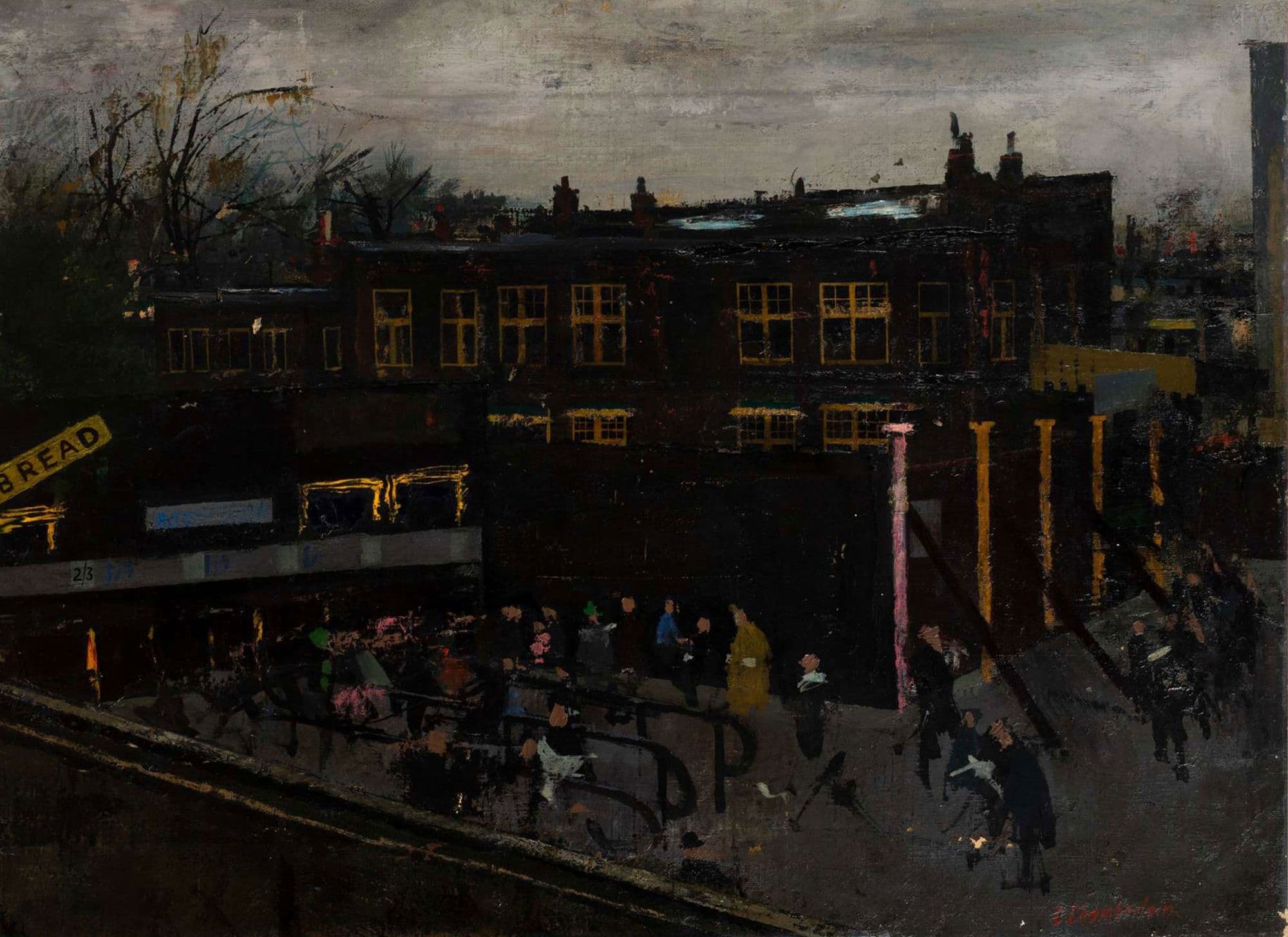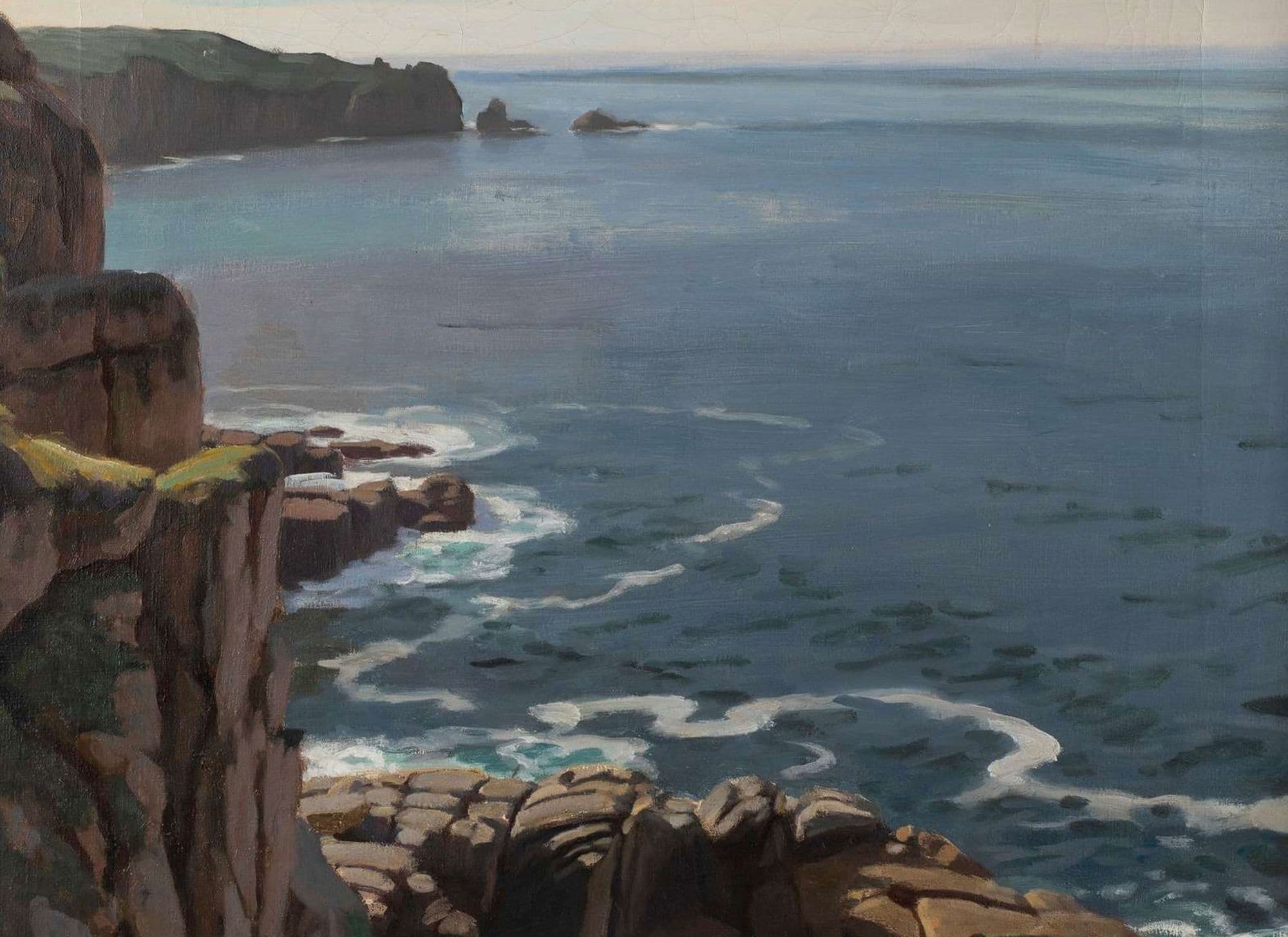John Atkinson Grimshaw’s innovative, sensitive portrayals of the atmosphere and ‘feeling’ of urban Victorian life led him to be considered one of the most accomplished British artists of the nineteenth century.
John Atkinson Grimshaw’s innovation was to apply Ruskin’s tenet of ‘truth-to-nature’ to scenes of Britain’s burgeoning industrial centres. Owing to his sensitive portrayal of the atmosphere and ‘feeling’ of urban life, he has been considered the artistic equivalent of the great Victorian novelists Charles Dickens and Elizabeth Gaskell.
Atkinson Grimshaw was born in Leeds in 1836. By 1860 he had left his position as a Northern Railway clerk to become a full-time painter, much to his parents’ dismay. His early artworks were generally landscapes and still lifes of fruit, flowers and birds rendered with a detailed intensity inspired by the Pre-Raphaelites. He also worked from photography, a relatively new medium, and is believed to have implemented camera obscura projections onto his canvases to refine his compositions.
His career breakthrough came in 1867 when a painting of Whitby harbour at night was received to great acclaim. The urban nocturne dominated Atkinson Grimshaw’s output forthwith, as he pursued ever-more subtle and complex ways to illuminate his compositions. Contemporary urban audiences identified with his night-time streetscapes lit by gas lamps, which effectively evoked the dynamism and isolation of the industrialised town.
Atkinson Grimshaw travelled to various towns and harbours to study their architecture and imbibe their atmosphere. The locales he most frequently painted (Glasgow, Leeds, Liverpool, Whitby, Scarborough and London) reflect the distribution of his market. In the mid-nineteenth century innovative contemporary art was generally patronised by wealthy industrialists in the north of England and Scotland. Such was the case with the Pre-Raphaelites, whose aesthetic initially proved too challenging for traditional London tastes but flourished in northern industrial centres. Atkinson Grimshaw’s market developed along similar lines, and it was not until the 1870s that London collectors began to invest in his work in earnest.
By 1870 he was successful enough to rent Knostrop Hall, a seventeenth-century mansion. The Hall was built for Adam Baynes (1622-1671), the first Member of Parliament for Leeds, and its Jacobean architecture would prove an enduring inspiration which Atkinson Grimshaw would continue to paint for the rest of his life.





